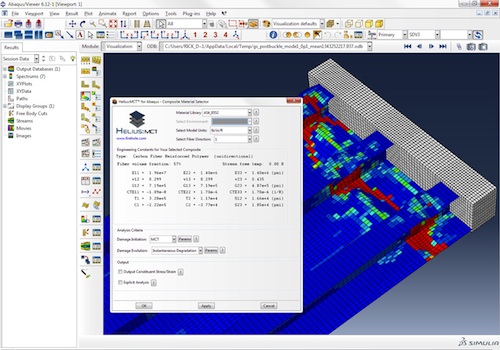Autodesk Acquisition Brings Composite Simulation Into the Fold
Latest News
March 27, 2013
Take a gander at the bill of materials of many cars, planes, even sporting goods equipment and it’s no surprise that any company aiming to be a serious player in simulation needs to add a composite tool to their CAE mix.
Dassault Systems offers composite simulation as part of its CATIA 3D Experience platform, and Siemens PLM Software made an aggressive play to address simulation of composite materials with its 2011 acquisition of Vistagy, which has a huge following in the aerospace sector.
Now jumping into the fray is Autodesk, which has already built out a pretty robust simulation software portfolio via its acquisitions of Algor (for FEA capabilities), Blue Ridge Numerics (for CFD functionality), and MoldFlow (for injection-molding analysis). Its latest target is Firehole Technologies, a privately-held firm specializing in design and analysis software for composite materials. The firm’s flagship product, Helius:MCT, delivers advanced capabilities for finite element analysis (FEA) of composite materials, taking a multiscale approach to evaluating progressive failure, damage tolerance, and structural response of composite parts.
Adding composites simulation to the Autodesk simulation portfolio is critical now as the usage of carbon fiber materials has escalated across myriad industries, driven by companies’ need to consider alternative materials to reduce weight, make products more energy efficient, and increase safety.
“In the last 20 years, composites have gone from being an exotic material used by NASA to an everyday material now used in sporting goods equipment and increasingly, by automotive OEMs,” says Ian Pendlebury, Autodesk’s senior director of simulation products.
While Autodesk has some composite simulation capabilities as part of its simulation product line—for example, its acquisition of MoldFlow brought it short fiber composite capabilities—it was lacking in more advanced capabilities, Pendlebury says. With Firehole’s product line, Autodesk will be able to offer composite engineers the ability to model layered woven and continuous fiber composites—an approach readily used in the aerospace and automotive industries, he explains.
For example, the latest version, Helius:MCT 5.0, has been enhanced to improve the efficiency and robustness of analysis using cohesive zone modeling to simulate delamination and disbanding—core techniques used heavily in the design of composites-based products. Firehole officials say that commercial aircraft customers using the latest Helius:MCT release have seen a 20% to 50% reduction in processing time of certain de-bond analysis operations. The new version has also been expanded to address additional failure criteria, including some of the recent developments by Hashin, Puck, and Christensen.
Firehole, based in Laramie, WY, employs 15 people, which will remain onsite as members of the Autodesk simulation organization. Autodesk is not disclosing terms of the acquisition, but Pendlebury estimated the dollar value at somewhere between $10 million and $40 million. As of now, Autodesk will sell and support the existing Firehole products, including Helius:MCT and Helius:CompositesPro, and will work over time to tightly integrate the offerings with the rest of Autodesk’s simulation lineup.
To take a quick tour of Helius:CompositesPro, watch the video below.
Subscribe to our FREE magazine, FREE email newsletters or both!
Latest News
About the Author
Beth Stackpole is a contributing editor to Digital Engineering. Send e-mail about this article to [email protected].
Follow DE






